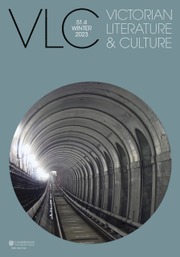Article contents
“DETERMINED RAPTURES”: ST. SEBASTIAN AND THE VICTORIAN DISCOURSE OF DECADENCE
Published online by Cambridge University Press: 01 March 1999
Abstract
“I unreservedly confess, for myself, that I cannot leave my natural perception of what is natural and true, at a palace door, in Italy or elsewhere, as I would leave my shoes if I were traveling in the East. I cannot forget that there are certain expressions of face, natural to certain passions, and as unchangeable in their nature as the gait of a lion, or the flight of an eagle. I cannot dismiss from my certain knowledge such common-place facts as the ordinary proportions of men’s arms, and legs, and heads; and when I meet with performances that do violence to these experiences and recollections, no matter where they may be, I cannot admire them.”
— Charles Dickens, Pictures from Italy (1846)
IN HIS ACCOUNT of his 1844 trip to Rome, Charles Dickens expressed bewilderment that the martyrdom of St. Sebastian should have been so commonly exploited as a subject by Italian artists. The novelist took the opportunity to disparage the “indiscriminate and determined raptures” of certain critics of Renaissance painting as “incompatible with the true appreciation of the really great and transcendent works of art . . . Neither am I partial to libelous Angels, who play on fiddles and bassoons, for the edification of sprawling monks apparently in liquor.” Dickens concluded that representations of St. Sebastian did not “have very uncommon and rare merits, as works of art, to justify their compound multiplication by Italian painters” (195).1
Information
- Type
- Research Article
- Information
- Copyright
- © 1999 Cambridge University Press
- 7
- Cited by

